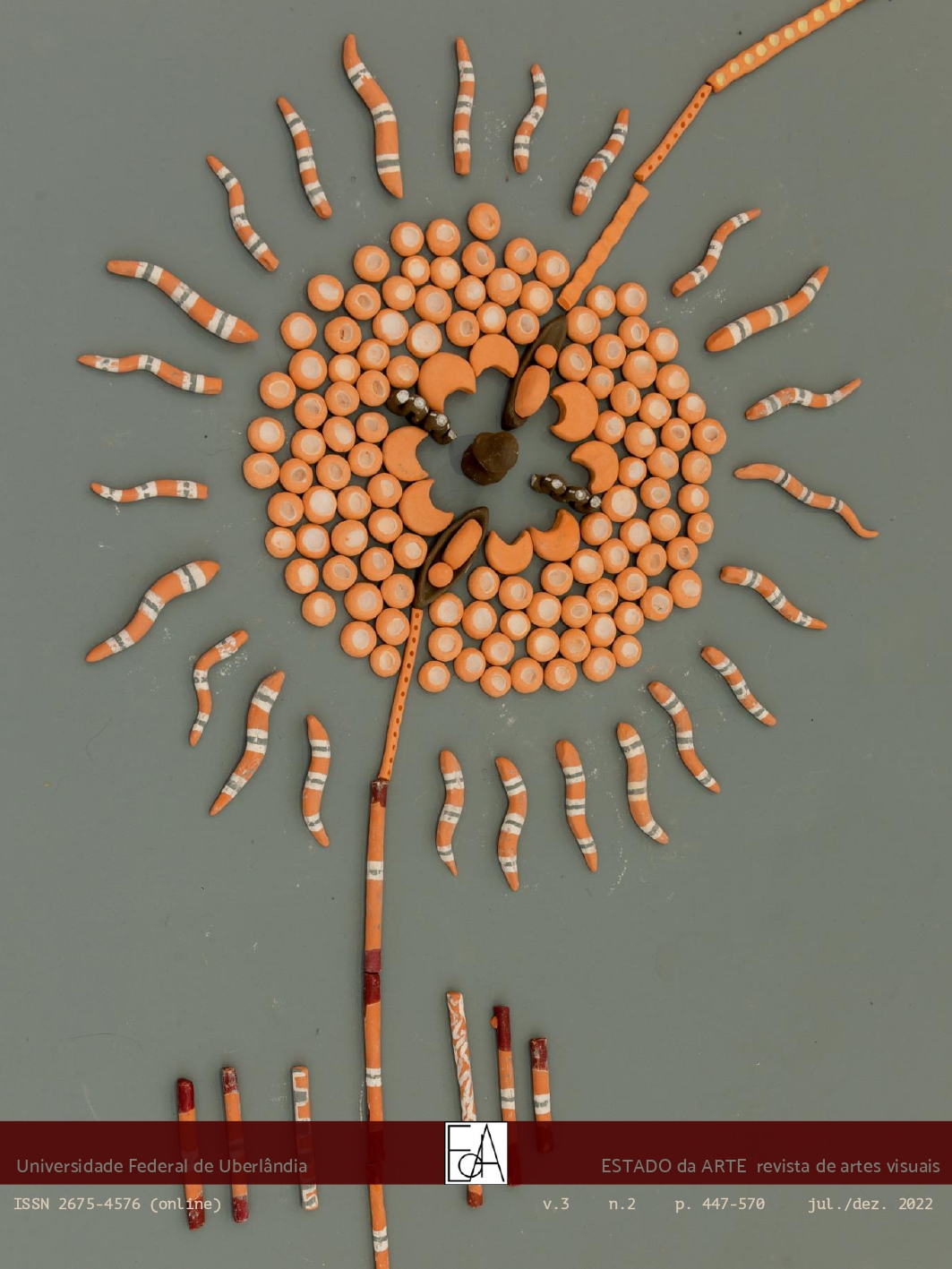Resumo
Apresentamos uma memória coletiva, baseada na trajetória do Coletivo Kókir. O objetivo é a análise dos processos de criação do coletivo, alinhados ao reconhecimento da ancestralidade indígena. Além dos subsídios teórico-metodológicos da autoetnografia (SANTOS; BIANCALANA, 2017; VERSIANI, 2005), recorremos à pesquisa em artes visuais (REY, 1996) na instauração de uma poética híbrida, urbana, indígena e contemporânea. A partir dos estudos sobre a antropologia reversa (WAGNER, 2010) investigamos em criações compartilhadas formas de incorporar elementos de nossas origens. O conceito de antropofagia reversa de Denilson Baniwa (MOULIN; MARQUEZ; ANDRÉS; CANÇADO, 2022) remete à crítica sobre a modernidade eurocentrada, o que nos impulsiona para a proposição de uma re-volta, associada ao pensamento decolonial (PALERMO,2019). A re-volta sinaliza a não aceitação da subalternidade imposta pela colonialidade aos indígenas e também a incorporação de conhecimentos dos povos originários na arte e cultura brasileira. A análise se justifica pela importância de expandir, por meio da arte, conhecimentos sobre nossos parentes indígenas. Os resultados são expectativas de que o céu não caia na cabeça das futuras gerações (KOPENAWA, ALBERT, 2015).
Referências
KOPENAWA, Davi; ALBERT, Bruce. A queda do céu: palavras de um xamã yanomami. São Paulo: Companhia das Letras, 2015. 729 p.
https://doi.org/10.18224/hab.v15i1.5905
MARQUEZ, Renata. A língua das onças e das lontras. Arte e Ensaios, vol. 26, n. 40, jul./dez. 2020. Disponivel em: https://revistas.ufrj.br/index.php/ae/article/view/8442-5644
https://doi.org/10.37235/ae.n40.25
MOULIN,Gabriela; MARQUEZ, Renata, ANDRÉS, Roberto; CANÇADO,Wellington (Org.) Habitar o antropoceno. BDMG Cultural, 2022. Disponível em: https://bdmgcultural.mg.gov.br/wp/wp-content/uploads/2022/02/bdmg-cultural-livro.pdf
PALERMO, Zulma. Arte y Estética En La Encrucijada Descolonial. Del signo, Buenos Aires, 1°Ed, 2009.
REY, Sandra. Da Prática à Teoria: três instâncias metodológicas sobre a pesquisa em poéticas visuais. Porto Arte: Revista de Artes Visuais, Porto Alegre, v. 7, n. 13, p. 81-95, nov. 1996.
https://doi.org/10.22456/2179-8001.27713
SANTOS, Camila Matzenauer dos; BIANCALANA, Gisela Reis. Autoetnografia: um caminho metodológico para a pesquisa em artes performativas. Revista Aspas. USP, Vol. 7, n. 2, 2017.
https://doi.org/10.11606/issn.2238-3999.v7i2p53-63
SANTOS, Sílvio Coelho dos. Índios e brancos no Sul do Brasil: a dramática experiência dos Xokleng. Florianópolis: Editora Edeme, 1973.
SANTOS, Tadeu. Arte, identidade e transformações na cestaria Kaingang da terra indígena ivaí, no contexto de fricção interétnica. Dissertação de mestrado, Programa de pós-graduação em Ciências Socias. Universidade Estadual de Maringá, 2018.
https://doi.org/10.18226/610001/mostraxvi.2016.45
SANTOS, Tadeu. Org. Sustento/Voracidade. Coletivo Kókir (Tadeu dos Santos e Sheilla Souza). Catálogo das exposições Sustento e Voracidade na Galeria Farol Arte e ação e Museu Paranaense, Curitiba, 2016.
VERSIANI, D. B. Autoetnografias: conceitos alternativos em construção. Rio de Janeiro: 7Letras, 2005.
WAGNER, Roy. A invenção da cultura. São Paulo: Cosac&Naify, 2010.

